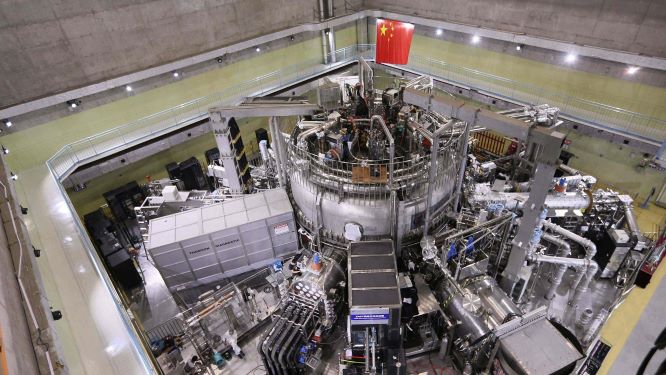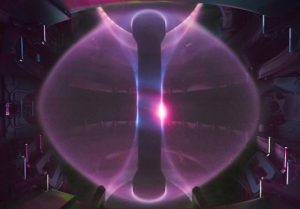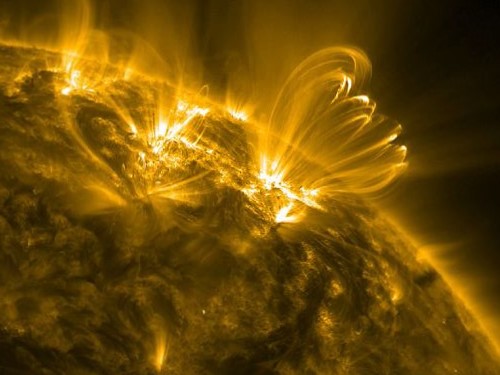Artificial Sun: China’s Quest of Clean & Limitless Energy
 Experimental Advanced Superconducting Tokamak (EAST)
Experimental Advanced Superconducting Tokamak (EAST)
Often called an “artificial sun”, the doughnut-shaped Experimental Advanced Superconducting Tokamak (EAST) that juts out of the land into a lake in eastern Anhui province, has notched up a succession of firsts.
Most recently in November, it became the first facility in the world to generate 100 million °C — six times as hot as the sun’s core. Chinese officials have now announced that the machine which will hold the ‘artificial sun’, called the HL-2M Tokamak, could be built this year using nuclear fusion in which hydrogen from seawater and readily available lithium will be heated to more than 150 million °C.
“The artificial sun’s plasma is mainly composed of electrons and ions and the country’s existing Tokamak devices have achieved an electron temperature of over 100 million degrees C in its core plasma, and an ion temperature of 50 million° C, and it is the ion that generates energy in the device,” said Dr Duan Xuru, an official at the China National Nuclear Corporation, according to Chinese daily.
Such mind-boggling temperatures are crucial to achieving sustainable nuclear fusion reactions, which promise an inexhaustible energy source. Unlike nuclear fission, fusion emits no greenhouse gases and carries less risk of accidents or the theft of atomic material.
Fusion is considered the Holy Grail of energy and is what powers our sun. It merges atomic nuclei to create massive amounts of energy — the opposite of the fission process used in atomic weapons and nuclear power plants, which splits them into fragments.

EAST’s main reactor stands within a concrete structure, with pipes and cables spread outward like spokes that connect to censors and other equipment encircling the core. A red Chinese flag stands on top of the reactor.
However, China is also aiming to build a separate fusion reactor that could begin generating commercially viable fusion power by mid-century.
Some six billion yuan ($890 million) has been promised for this project. EAST is part of the International Thermonuclear Experimental Reactor (ITER) project, which seeks to prove the feasibility of fusion power.
This will be funded and run by the European Union, India, Japan, China, Russia, South Korea, and the United States, the multi-billion-dollar project’s centrepiece will be a giant cylindrical fusion device, called a tokamak.
Now under construction in Provence in southern France, it will incorporate parts developed at the EAST and other sites, and draw on their research findings.
But sustaining the high temperatures and other unstable conditions necessary is both extremely difficult and prohibitively expensive — the total cost of ITER is estimated at 20 billion euros (USD 22.5 billion).
Wu Songtao, a top Chinese engineer with ITER, conceded that China’s technical capabilities on fusion still lag behind more developed countries and that US and Japanese tokamaks have achieved more valuable overall results.
But the Anhui test reactor underlines China’s fast-improving scientific advancement and its commitment to achieving yet more. China’s capabilities “have developed rapidly in the past 20 years, especially after catching the ITER express train,” Wu concluded.
With inputs from Agencies
Picture credit: VCG photo, CGTN







EAST has not broken any fusion records, perhaps only long pulse lengths with decent performance,.